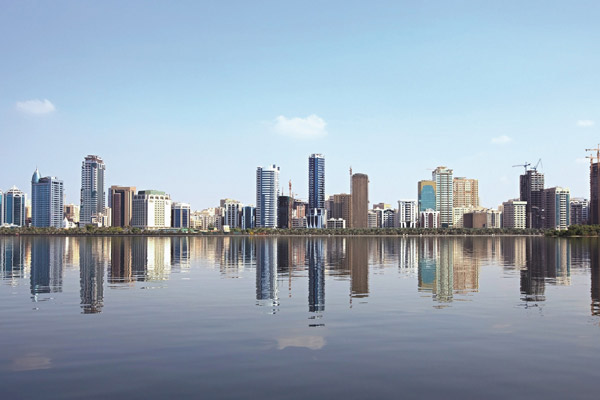
Sharjah’s residential property rents set to drop further
SHARJAH, May 10, 2016
Rents in Sharjah’s residential property market are set to continue to decline throughout 2016, following an average fall of 5.7 per cent during Q1 which has dragged the annualised rate of change in rents down to -8.3 per cent, according to international real estate consultancy Cluttons.
Cluttons’ Sharjah Spring 2016 Property Market Outlook report shows that unlike last year, the fall in villa rents has accelerated, with average rates declining by 13.2 per cent in Q1 2016 alone, whereas average apartment rents fell by 1.5 per cent in the first quarter, leaving them 7.7 per cent down compared to Q1 2015 figures.
The report also highlights the growing awareness amongst tenants to seek out well managed properties, with good quality facilities and rents that are perceived to be ‘fair’.
Suzanne Eveleigh, the Cluttons' head of Sharjah, said: "This sentiment among tenants creates an opportunity for landlords to differentiate themselves by undertaking refurbishment and modernisation of properties while the market works its way through the current slowdown."
"We have already seen numerous instances of this being done during the last downturn in the market and it is these properties that are now fully let and in high demand. That said, even in our portfolio of managed properties, voids have crept up to around three per cent, up from the usual average of 0.5 per cent to one per cent, reflecting the softening conditions. The situation is far more challenging in buildings where landlords haven't been proactive," she noted.
Cluttons research shows that demand for suburban-style living continues to rise in Sharjah, predominantly because of the relative affordability when compared to Dubai.
Developers are conscious of the demand for more luxurious gated accommodation and are continuing to rush new schemes to the market.
"These emergent high-end communities will help cater to the strong demand from both residential investors and tenants who are seeking out this type of housing in Sharjah," remarked Eveleigh.
"Al Zahia and the Dh2.4-billion ($653 million) Tilal City are examples of such communities that are progressing quickly. We expect to continue seeing larger and more elaborate residential communities built on the outskirts of the city, with a specific focus on the Airport Road corridor," she stated.
According to the report, the weaker conditions in the market are expected to persist as the year wears on, with rental falls of between three per cent and five per cent likely, on average.
Faisal Durrani, the head of research at Cluttons, pointed out that the rents across Sharjah’s more affordable areas remained linked to the performance of Dubai’s rental market.
"With a weak short-term outlook for Dubai, we do not expect to see any turn around in rental value growth until jobs linked to the World Expo in 2020 start to materialise, which we should start to see in the next 12 to 18 months. Until then, the rental market in Sharjah is expected to remain subdued," noted Durrani.
On the office market, Cluttons said rents across Sharjah’s main submarkets have stayed flat over the past six months, with all three of the city’s main areas (Al Soor, Al Majaz fringe areas, and Al Majaz prime areas) experiencing no change.
The only market to have showcased any change in the past 12 months is the fringe areas of Al Majaz, where office rents increased by 7.7 per cent between Q1 2015 and Q1 2016 and currently stand at Dh70 per sq ft, up from Dh65 per sq ft in 2015.
“While the silver lining for Sharjah’s office market is the relative stability in the level of prime office supply, the level of requirements has continued to dwindle. The vast majority of requirements that we have been recording are from the emirate’s important SME (small and medium enterprises) sector; which is usually for space in the region of 1,000 sq ft.” said Durrani.
Aside from this core demand driver, Cluttons has noted a handful of requirements from oil and gas linked occupiers, who, alongside the public sector and quasi government sector, continue to drive larger space requirements.
"Despite the relative stability in the emirate’s office market, we are expecting to see rents decline this year between Dh5 per sq ft and Dh10 per sq ft across the board," stated Durrani.
"With entry level rents in comparable, desirable and sought-after office submarkets in Dubai such as Deira, Bur Dubai, Garhoud, Jumeirah Lake Towers and Business Bay currently standing at between Dh60 per sq ft and Dh75 per sq ft, it is likely that Sharjah’s office landlords will be left with little option but to drop rents to below those in Dubai in order to entice demand," he added.-TradeArabia News Service







